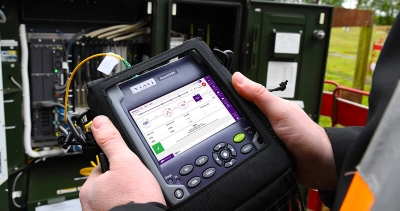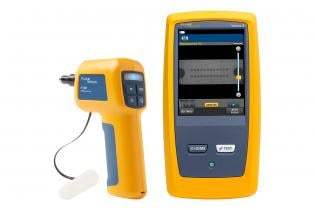Upcoming trends in optical measurement system technology
Wiki Article
Understanding How an Optical Measurement System Boosts Precision in Industrial Applications
Optical measurement systems play an essential function in improving accuracy throughout different industrial applications. By leveraging sophisticated modern technologies such as laser interferometry and 3D imaging sensing units, these systems use high-resolution, non-contact measurements. This capability minimizes the risk of damaging sensitive components while making certain precision. The effect of these systems expands beyond mere dimensions. Discovering their benefits, applications, and future trends exposes a complex landscape of technology and challenges that qualities better examination.The Fundamentals of Optical Measurement Systems
Optical measurement systems offer as important devices in numerous industrial applications, offering exact data collection and analysis. These systems use light as a key methods of measurement, leveraging optical principles to examine measurements, settings, and surface area features of objects. They integrate elements such as lasers, electronic cameras, and sensing units, which work together to catch high-resolution images and information.The modern technology allows non-contact dimensions, lessening the threat of damaging delicate parts. Optical measurement systems are flexible, locating utility in quality control, assembly verification, and dimensional analysis across various sectors. They are especially reliable in environments where standard measurement strategies may fall short, such as gauging intricate geometries or observing quick movements.
As markets remain to develop, the integration of optical measurement systems will stay crucial for ensuring precision and efficiency, eventually boosting item quality and functional efficiency in numerous producing processes.
Trick Technologies Behind Optical Measurement
Key modern technologies such as laser interferometry strategies and 3D imaging sensing units play a crucial function in the effectiveness of optical measurement systems (fibre testing equipment). These technologies allow accurate measurements and in-depth evaluation in various industrial applications. Comprehending their capabilities is important for using the full capacity of optical measurement systemsLaser Interferometry Techniques
Numerous laser interferometry methods have actually changed the area of optical measurement, offering unmatched precision and accuracy in different industrial applications. These methods make use of the interference of systematic light waves to gauge distance, variation, and surface area abnormalities with nanometer-level precision. Common techniques include Michelson interferometry, which splits a beam and assesses phase shifts, and Fabry-Pérot interferometry, known for its high resolution in determining small modifications. Furthermore, laser Doppler interferometry employs regularity changes to evaluate speed, making it vital in vibrant dimensions. The flexibility of these strategies permits their integration into diverse manufacturing procedures, improving top quality control and making sure adherence to rigid tolerances. Therefore, laser interferometry continues to play an essential function in progressing industrial measurement requirements.3D Imaging Sensors
Advancements in measurement innovation have resulted in the growth of 3D imaging sensors, which play a considerable role in optical measurement systems. These sensing units record three-dimensional data with various strategies such as triangulation, time-of-flight, and structured light. By accurately rebuilding the shape and dimensions of items, 3D imaging sensing units boost the precision of dimensions in commercial applications. They offer real-time comments, helping with quality assurance and making certain that parts satisfy stringent specs. In addition, their capability to operate in tough atmospheres, such as differing lights conditions, makes them invaluable in producing procedures. As sectors progressively take on automation, the assimilation of 3D imaging sensors into optical measurement systems is anticipated to drive additional improvements in effectiveness and precision.Advantages of Optical Measurement in Market
Traditional measurement methods have actually long been the standard in commercial setups, optical measurement systems supply substantial benefits that improve accuracy and performance. These systems utilize light to record data, resulting in high-resolution measurements that are frequently unattainable with conventional techniques. The non-contact nature of optical measurements minimizes the risk of damaging sensitive components during the analysis process. Additionally, the rate of optical measurements enables rapid data procurement, facilitating timely decision-making in busy commercial environments.Optical systems are adaptable, efficient in measuring various products and forms without the requirement for substantial recalibration. This adaptability adds to enhanced process and efficiency. Moreover, the automation capacity of optical measurement systems minimizes human mistake, making sure consistent high quality control. Overall, the assimilation of optical measurement innovation stands for a dynamic shift in the direction of enhanced precision and reliability in commercial operations, ultimately bring about enhanced product top quality and operational efficiency.
Applications of Optical Measurement Systems

Optical measurement systems play a pivotal duty in enhancing manufacturing process optimization by giving accurate data for decision-making. These systems assure high quality control assurance with real-time tracking and evaluation of manufacturing metrics. As industries progressively take on these technologies, their effect on performance and product reliability ends up being obvious.
Production Refine Optimization
Enhancing manufacturing process effectiveness is progressively dependent on the combination of optical measurement systems. These systems provide real-time data on numerous parameters, permitting suppliers to analyze processes with a high degree of precision. By making it possible for precise measurements of measurements, surface area characteristics, and product properties, optical measurement systems facilitate the identification of inadequacies and bottlenecks in assembly line. The immediate responses from these systems equips engineers to make enlightened decisions, leading to maximized machining, setting up, and completing procedures. The ability to keep track of problems constantly allows for adaptive adjustments, minimizing downtime and waste. As sectors go for higher performance and minimized operational expenses, optical measurement systems become crucial tools for boosting manufacturing process optimization.
Quality Control Assurance
The assimilation of optical measurement systems considerably influences quality control guarantee in industrial setups. These systems provide accurate and non-destructive measurements, making it possible for suppliers to find problems and inconsistencies early in the production procedure. By utilizing sophisticated imaging techniques, such as laser triangulation and interferometry, optical measurement systems assure that components satisfy strict requirements. This helps with real-time surveillance, minimizing waste and minimizing the threat of malfunctioning products getting to the market. Additionally, the data important site collected can be assessed to improve manufacturing procedures even more, resulting in continuous enhancement. Inevitably, the adoption of optical measurement systems boosts integrity and uniformity in quality control, promoting higher confidence amongst stakeholders and consumers alike in the end products supplied.Instance Researches: Successful Executions
Various industries have successfully integrated optical measurement systems to improve their functional efficiency and product quality. As an example, in the vehicle industry, a noticeable maker adopted a laser triangulation system to keep track of the positioning of automobile parts. This execution considerably minimized assembly mistakes, causing enhanced safety and decreased costs.In the aerospace industry, a leading airplane maker utilized optical assessment for precision measurements of wind turbine blades, achieving a decrease in making tolerances and far better efficiency standards.
In a similar way, a consumer electronics firm applied optical measurement innovation during the production of smart device displays, leading to enhanced top quality control and a reduction in faulty items.
These study show exactly how optical measurement systems not just enhance precision but likewise add to overall functional performance, showing their value throughout numerous sectors. By resolving specific requirements, these systems have actually confirmed to be vital tools in modern-day commercial applications.
Challenges and Limitations of Optical Measurement
While optical measurement systems provide substantial benefits in numerous industrial applications, they are not without their difficulties and limitations. One major problem is sensitivity to environmental problems, such as temperature changes, moisture, and dirt, which can detrimentally influence measurement accuracy. Furthermore, optical systems frequently call for precise placement and calibration, making them at risk to human mistake during configuration and procedure. An additional limitation is the capacity for disturbance from ambient light, which can misshape dimensions and demand intricate filtering system methods. Particular materials and surface areas might provide problems, as reflective or transparent attributes can lead to irregular readings. The cost of high-grade optical components and systems can also be a barrier for some industries, restricting prevalent fostering. Specialized training is frequently needed for employees to successfully operate and maintain these systems, adding to the total intricacy and functional obstacles.Future Fads in Optical Measurement Technology
As innovations in technology remain to shape commercial processes, the future of optical measurement systems is poised for substantial development. Emerging trends indicate a change towards boosted combination of expert system and artificial intelligence, making it possible for systems to evaluate information in real-time, recognize patterns, and boost decision-making procedures. On top of that, the development of miniaturized sensing units and advanced optics is anticipated to lead to even more compact and functional measurement services, making them easily accessible for a larger variety of applications.Furthermore, the unification of 3D imaging and high-resolution capabilities will permit unmatched precision in dimensions, which is vital for industries such as aerospace and vehicle. The press for automation and Industry 4.0 will also drive the demand for optical measurement systems that can quickly user interface with various other innovations. As these patterns unravel, optical measurement systems will likely come to be integral to achieving better effectiveness and precision throughout numerous commercial industries.

Often Asked Inquiries
Exactly How Do Optical Measurement Systems Compare to Traditional Measurement Approaches?
additional hints Optical measurement systems use higher accuracy and rate compared to typical approaches - optical fibre diameter analyser. They reduce human mistake, improve data collection effectiveness, and offer real-time results, making them significantly liked in various commercial applications for specific measurementsWhat Industries Benefit the Most From Optical Measurement Systems?
Optical measurement systems considerably benefit sectors such as aerospace, automobile, and electronic devices. Their capability to provide high-precision dimensions improves quality assurance, lowers manufacturing errors, and boosts overall efficiency, making them important in affordable manufacturing atmospheres.Can Optical Measurement Systems Be Customized for Certain Applications?
Optical measurement systems can indeed be customized for particular applications. By changing criteria such as wavelength, resolution, and calibration techniques, markets can tailor these systems additional reading to fulfill unique precision and precision requirements efficiently.What Is the Upkeep Demand for Optical Measurement Systems?
The upkeep requirements for optical measurement systems usually consist of normal calibration, cleaning of optical components, and software program updates. Following these practices assurances accuracy, dependability, and durability of the measurement devices in numerous applications.Just How Do Ecological Factors Affect Optical Measurement Accuracy?
Environmental factors, such as temperature fluctuations, moisture, and dirt, significantly effect optical measurement precision. These components can misshape light courses and disrupt sensor analyses, eventually compromising the dependability and precision of measurements in industrial settings.Report this wiki page